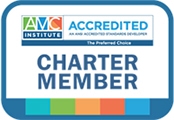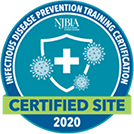I recently attended a webinar entitled, “Making the First Year Memorable,” presented by Mark Levin, CAE, CSP. It provided many insights into first-year member retention.
Beginning with an overview of the monetary value of each member and concluding with the underlying goal of membership, Mr. Levin provided many salient clues on how to keep first-year members.

The most interesting points in his presentation were the calculations of the value of a member, the need to truly focus on first-year members and the primary goal to make membership “desired, not required.”
Levin speaks about the “value” of a member. The value of each member is not simply their annual dues plus other non-dues revenue sources (income from publications, events, sponsorship, etc.) but the compounding value of losing a first year member.
In order to calculate the “worth” of a member, one must incorporate first year expenditures and multiply by five. Five years is the average “lifetime” of a member. Losing a first year member actually translates into five times their annual investment.
How to keep first year members should be a primary focal point of any membership organization. First year members need different care than existing members. The biggest element of Levin’s presentation was about “personalized” care.
The type of relationship a member has with an organization will vary depending on what they are looking for in their organizational relationship. Membership managers must establish a specific protocol and system for retaining these first year members to increase the opportunity to make them lifetime members.

The five steps in a first year retention program Levin suggests are:
1) Immediate Reinforcement
2) Personal Contact
3) Effective Intake
4) Targeted Engagement
5) Appropriate Recognition
These five steps must be tailored to each member individually thereby reinforcing the necessity to make every member feel special. Levin delves into each step of this retention program with specific tools and ideas.
A member’s engagement in an association or organization will determine their satisfaction rate and ultimately will be dependent upon their personal experience with the organization.
The takeaway from this session was that all membership organizations must develop a separate protocol for first year members. First year retention should be treated and managed differently than existing membership. The way to improve first year retention is to develop personal relationships with each member individually. By doing so, an organization can maintain an on-going assessment of each member’s needs and thereby create a more positive experience for each member.
By employing a truly unique membership system for first year members, the success rate and retention rate will improve for the subset of the membership, thereby improving overall retention.
By the end of the first year, new members should desire membership within an organization, not feel that it is a required element of doing business that may or may not yield results.




